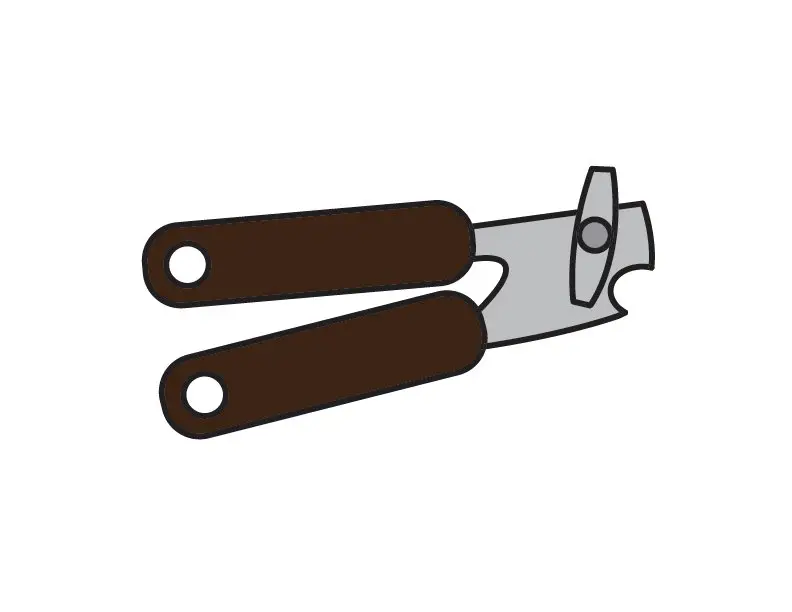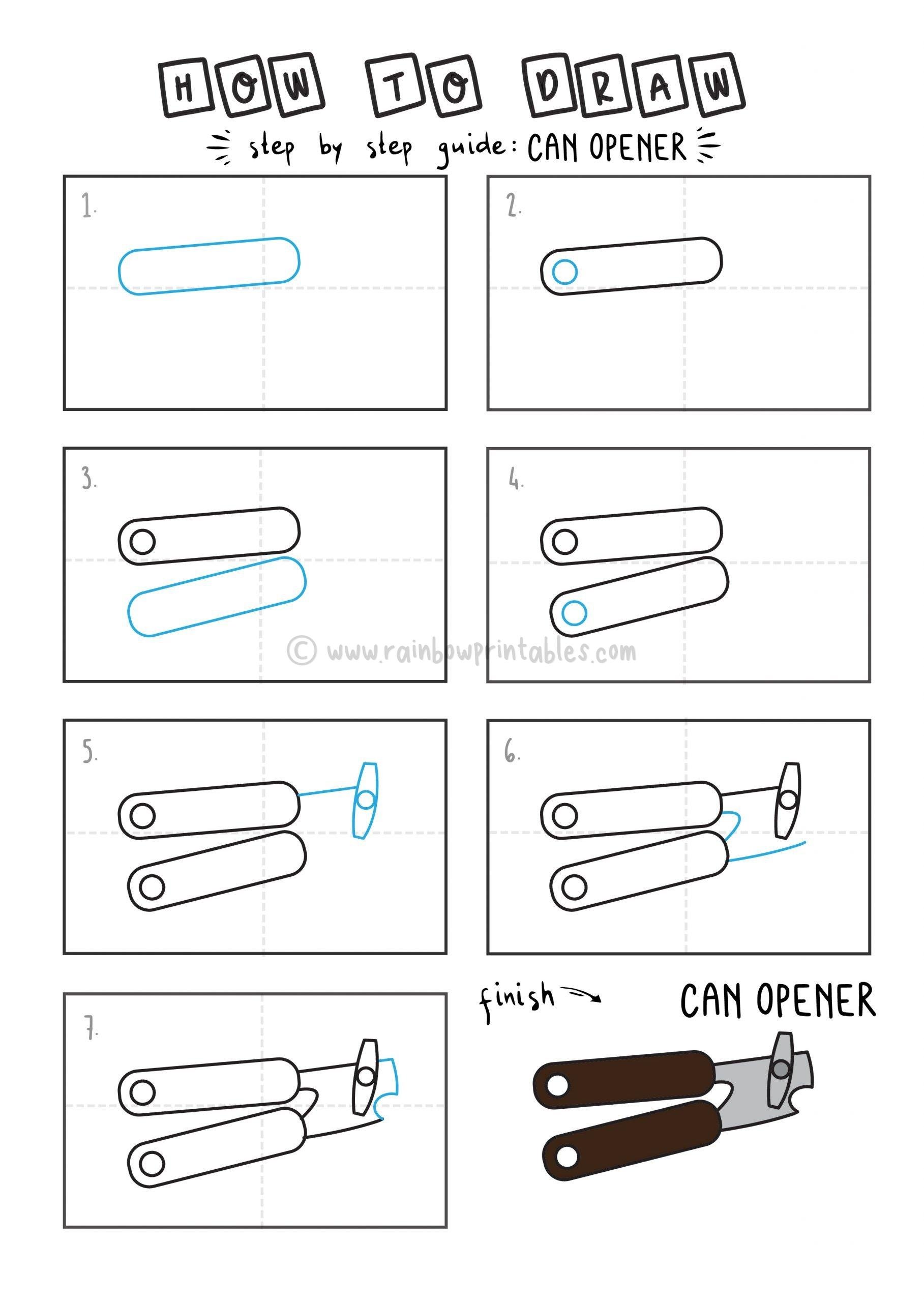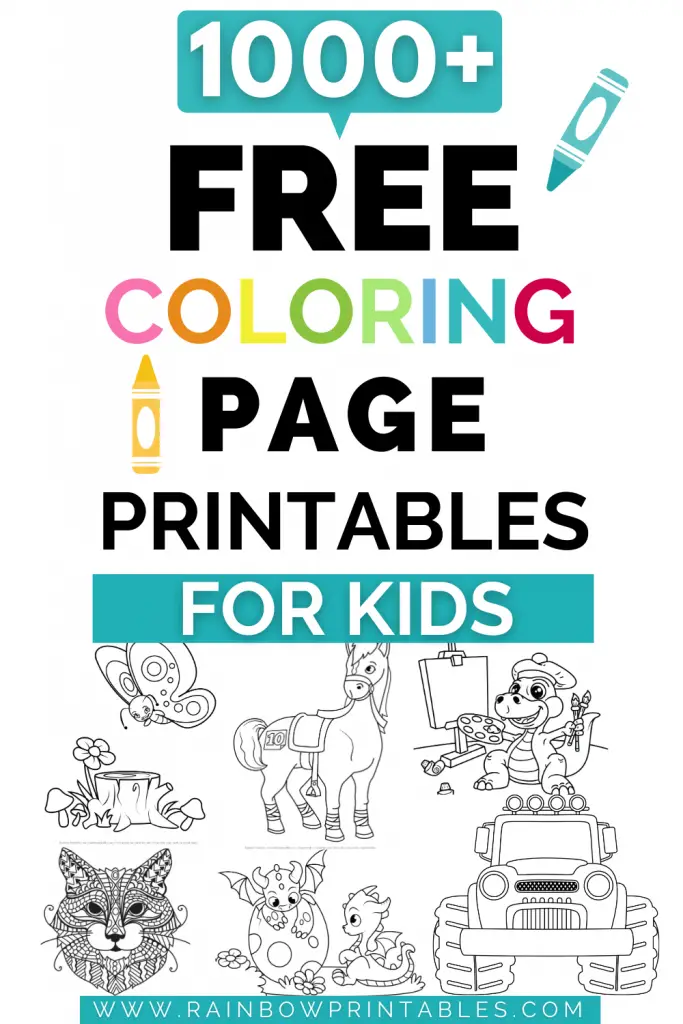BestNow Clay Beads Bracelet Making Kit 5000 Pcs Friendship Bracelet Kits Flat Beads for Jewelry Maki...
$4.99 (as of April 7, 2025 21:03 GMT -07:00 - More infoProduct prices and availability are accurate as of the date/time indicated and are subject to change. Any price and availability information displayed on [relevant Amazon Site(s), as applicable] at the time of purchase will apply to the purchase of this product.)What does (almost) every single family kitchen have? A can opener! Our family has three…only because they update cans and new ways to cut cans. Phew boy. They are not always easy to use and to a lot of people, they are hard to draw. But this is actually a great exercise for kids to mentally practice creating a common, everyday 2d image from a 3d object in front of them.

We specialize in very simple and easy drawing tutorials that young children can start their artistic journeys on.
🖍️ Tools For Success
- Paper (Our Free How To Draw Template PDF)
- Pencil
- Polymer Eraser
- Outline Markers
- Coloring Tools (I recommend Crayola’s 140 Piece Coloring Case)
🎨 Parents: The only tools you need to use these how-to-draw tutorials are: an eraser, a pencil, and a piece of paper. But – if you have them around – a sketching pencil makes for fainter and softer lines that help kids build fine motor accuracy. I also recommend going over the sketch pencil with a black outline marker when you’re done for a neater finish. Lastly, erase the pencil marks before adding color.
Step-by-Step How to Draw a Can Opener
- Draw a long oval shape handle with a small circle inside its left corner.
- Then, repeat the step, but this time, draw the other adjacent to the first one leaving very little space in between.
- At the top of the first oval, draw a diagonal line with a small rectangular shape at the end of it. The rectangular shape should be vertically slanted, and its longer sides should be slightly curved.
- Then, inside it, draw a small circle occupying all the spaces in the middle.
- Connect the handles of the can opener by drawing a small curved line on their top connecting them.
- Draw another diagonal line on the second oval connecting it to the other diagonal line on top of it by drawing another curve line to connect them.
- Did you draw the can opener? Now you can easily open any canned goods through this can opener. Let’s color the handle with brown, leaving the circular area white and the opener’s metal part on the top as gray.
~
🔖 See our collection of How-To-Draw tutorial instructions for young kids! Check out our collection of free coloring pages for kids while you’re here too. We’re a group of independent illustrators that create coloring pages, how to draw tutorials, craft printables, and educational worksheets for kids. We update our resource library regularly so feel free to check back as we add more and more content. We’re currently at over 1000+ coloring pages and 500+ how-to-draw stuff guides for kids!
~
🖍️ Tools For Success

Printing & Saving Instructions:
- Desktop & laptop users: the instant print button is in the upper left-hand corner.
- Mobile users: if you don’t see the instant print icon on mobile for whatever reason, toggle your mobile browser to “Desktop View” and you should be able to see it. You can find that in your web browser’s menu. Or find the nearest computer to print.
- Change the page orientation from horizontal or vertical depending on what fits best.
- To decrease load time we put images on different sub-pages. Use the navigation on the top and bottom of the galleries to toggle.
- Designed to fit both A4 size & U.S. standard letter size but preview your specs just in case.
- Want to save a file for later? Just hit the instant print button and choose instead to print, select Save As “PDF” in the drop-down selection, and done! (Your screen and selection might look a little different.)
Interesting Facts about Can Openers
- Although canning dates back to the mid to late 1700s, can openers were not developed until around 50 years later.
- The Canning method became successful and popular in the early 1800s, but can openers were not invented sooner due to the heavy thickness of the iron used in the cans.
- Can openers invented in 1850 had a leverage mechanism shaped like a claw. This replaced the popular hammer and chisel form of opening a can at the time.
- Today modern can openers have a sharp metal spinning disc that, when pushed around the side, slices through cans.
- It is said that in 1870, William Lyman, an American engineer from Meriden, Connecticut, in the United States, invented the first can opener with the revolving wheel, and it is this fundamental concept that most modern designs use.
- Early can openers were dangerous to use, but this was remedied by better cutting methods and construction.
- When it was first introduced in 1931, electrically powered can openers were not popular. As captalism goes, in 1956, products can be improved. And it was by at least two separate firms, of which the one became popular.
- Can openers often use a scissor-like mechanism with two handles that pivot and close two discs onto the can, one of which moves around the can and the other of which slices, all of which move as a result of the user spinning a protruding handle.
- Many cans now have their ring pull lid or pull open top that conveniently opens the can without the use of can opener, making can openers obsolete. (Although it’s good to keep one opener around since not all cans have them,)
- A total of 64 million tonnes of aluminum cans (approximately 3 trillion cans) have been made since 1972.
- Any 9 million cans are recycled per hour worldwide. This is good news, given that it takes about 200 years for a can to decay if you bury it.
- It takes only a month for a paper to biodegrade, a year for a woolen sock, and hundreds of years for plastic and cans to biodegrade.
- Recycling cans saves 95% of the energy needed to extract aluminum from ore, which equates to 18 million barrels of oil or 10.8 billion kilowatt-hours.
🖍️ MORE HOW TO DRAW TUTORIALS…
- How To Draw Popular Minecraft Characters
- How To Draw Abe Lincoln
- How to Draw Baby Shark
- How To Draw Among Us Character
- How To Draw Dinosaurs (Different Kinds)
- How to Draw a Dolphin
- How To Draw a Cute Little Dragon
Help Support Artists Big and Small
We would much appreciate it if everyone who enjoyed or benefited from our how-to-draw tutorial series can give us a social media shout-out or a link back. This will allow us to create more content by 1) commissioning small, independent artists and 2) teach young children everywhere to create more through art. Thank you.



